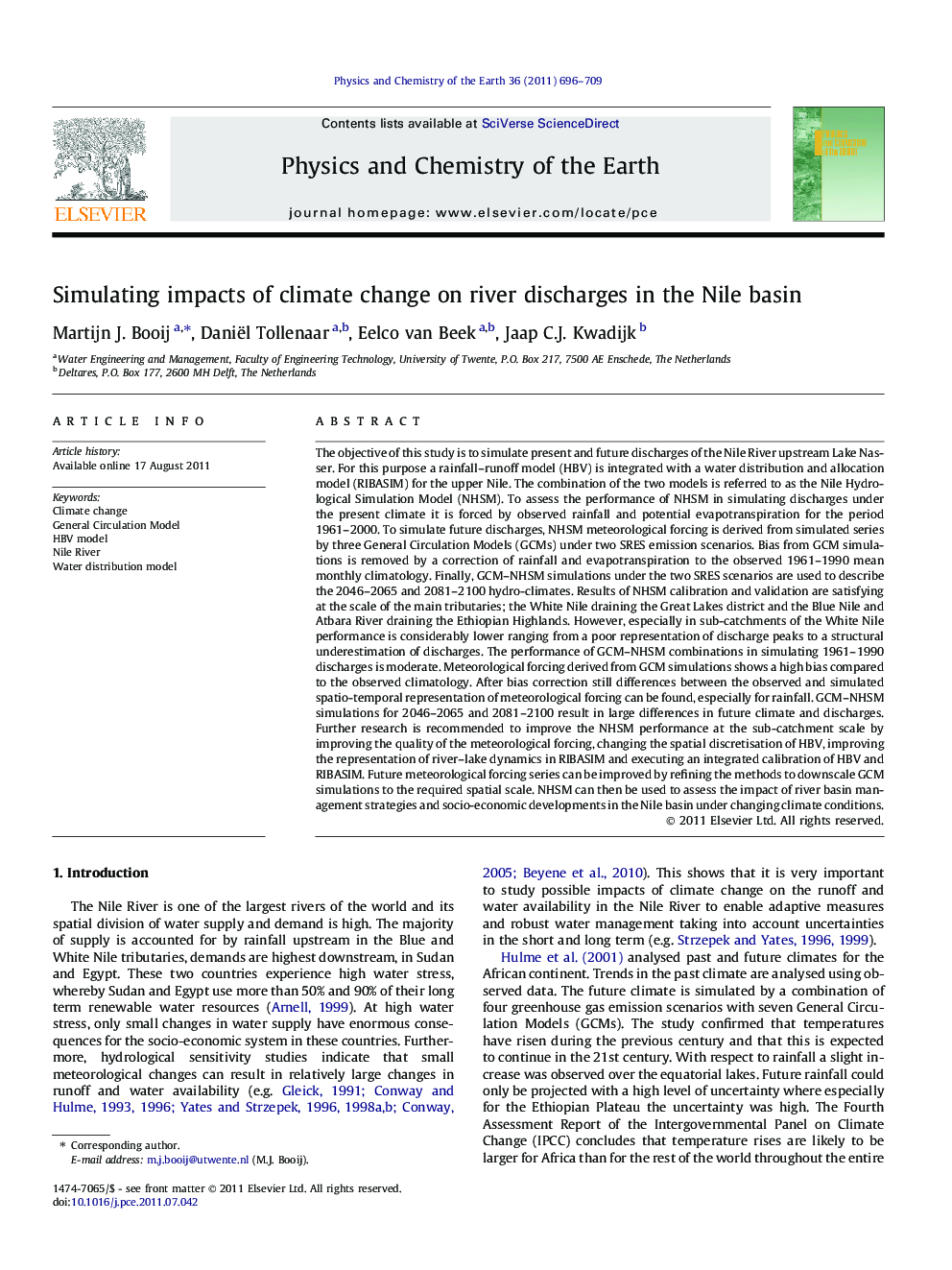| کد مقاله | کد نشریه | سال انتشار | مقاله انگلیسی | نسخه تمام متن |
|---|---|---|---|---|
| 4721411 | 1639375 | 2011 | 14 صفحه PDF | دانلود رایگان |

The objective of this study is to simulate present and future discharges of the Nile River upstream Lake Nasser. For this purpose a rainfall–runoff model (HBV) is integrated with a water distribution and allocation model (RIBASIM) for the upper Nile. The combination of the two models is referred to as the Nile Hydrological Simulation Model (NHSM). To assess the performance of NHSM in simulating discharges under the present climate it is forced by observed rainfall and potential evapotranspiration for the period 1961–2000. To simulate future discharges, NHSM meteorological forcing is derived from simulated series by three General Circulation Models (GCMs) under two SRES emission scenarios. Bias from GCM simulations is removed by a correction of rainfall and evapotranspiration to the observed 1961–1990 mean monthly climatology. Finally, GCM–NHSM simulations under the two SRES scenarios are used to describe the 2046–2065 and 2081–2100 hydro-climates. Results of NHSM calibration and validation are satisfying at the scale of the main tributaries; the White Nile draining the Great Lakes district and the Blue Nile and Atbara River draining the Ethiopian Highlands. However, especially in sub-catchments of the White Nile performance is considerably lower ranging from a poor representation of discharge peaks to a structural underestimation of discharges. The performance of GCM–NHSM combinations in simulating 1961–1990 discharges is moderate. Meteorological forcing derived from GCM simulations shows a high bias compared to the observed climatology. After bias correction still differences between the observed and simulated spatio-temporal representation of meteorological forcing can be found, especially for rainfall. GCM–NHSM simulations for 2046–2065 and 2081–2100 result in large differences in future climate and discharges. Further research is recommended to improve the NHSM performance at the sub-catchment scale by improving the quality of the meteorological forcing, changing the spatial discretisation of HBV, improving the representation of river–lake dynamics in RIBASIM and executing an integrated calibration of HBV and RIBASIM. Future meteorological forcing series can be improved by refining the methods to downscale GCM simulations to the required spatial scale. NHSM can then be used to assess the impact of river basin management strategies and socio-economic developments in the Nile basin under changing climate conditions.
► We simulate river discharges in the Nile basin with an integrated hydrological model.
► We use output from three GCMs for two SRES scenarios to assess impacts of climate change.
► Simulation results are satisfying on the scale of the main tributaries of the Nile.
► Model performance is low when using GCM results for 1961–1990 as input.
► Large differences in future climate and discharges are simulated for different GCMs.
Journal: Physics and Chemistry of the Earth, Parts A/B/C - Volume 36, Issue 13, 2011, Pages 696–709